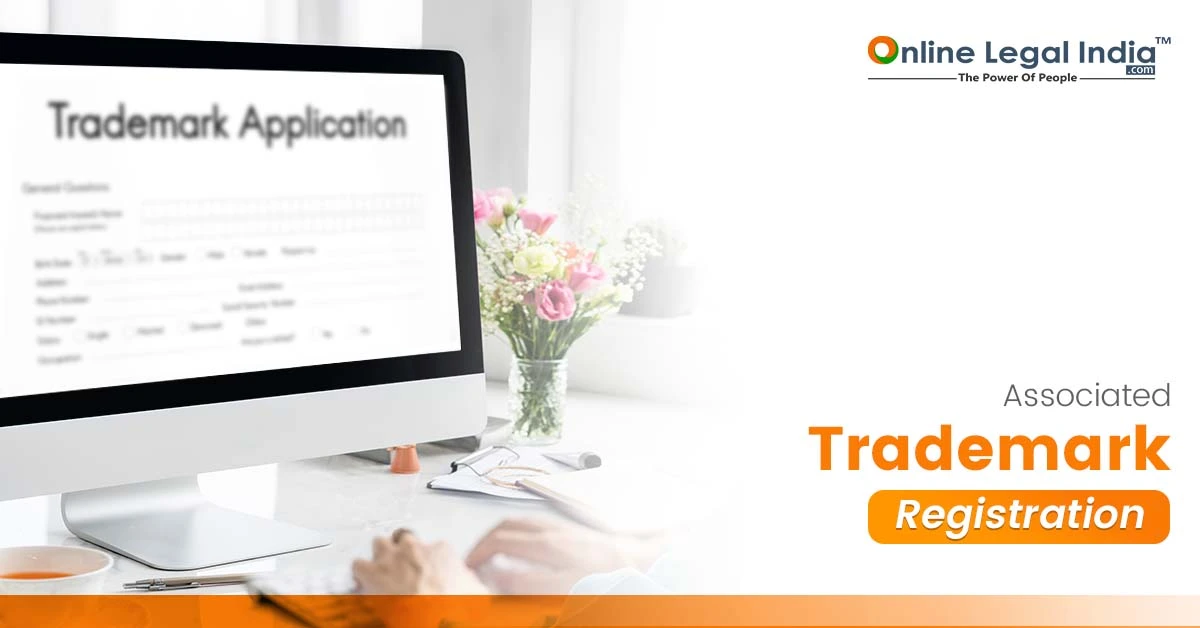GSTR 10 - Final GST Return for Registered Taxpayers in India
18 Dec, 2025

 By Online Legal India
Published On 04 Feb 2023
Updated On 22 Feb 2025
Category Trademark
By Online Legal India
Published On 04 Feb 2023
Updated On 22 Feb 2025
Category Trademark
Associated trademarks enable a company to brand new items and services using its significant mark or derivative forms of its primary mark. This form of trademark also permits a company to register a mark that is similar to one owned by another company.
Trademarks regarded as or need to be registered as associated trademarks under this Act are associated trademarks. However, where a registered trademark or the subject of an application for trademark registration in case of any goods or services is similar to another trademark registered or the subject of an application for trademark registration in the name of the same proprietor in case of the same goods or description of goods or description of services or so nearly resembles it as to be likely to cause confusion if used by the same person.
In India, trademarks are registered as associated trademarks when two marks registered in the same class are identical or so closely resemble each other that they are likely to deceive or cause confusion if used by someone other than the proprietor concerning the same goods or description of goods or services. The significant trademark awarded protects the core intellectual property of a company. However, the company may file for affiliated trademarks for unrelated goods and services.
Where the use of a registered trademark must be proven for whatever reason, the tribunal may accept the use of one of the linked trademarks to substantiate the use of the associated registered trademark in issue under section 55. So, if a person has been awarded an associated trademark for several trademark classes of products, his genuine use of the trademark in one class implies that he has been using it in the other classes as well.
As a result, anybody can file related applications if the modification, addition, or alteration does not significantly damage their identification. Furthermore, if the mark is withdrawn or no longer valid, the applicants can request that the Registry "dissolve the relationship" by submitting a specific form.
Section 44 states that the two connected trademarks must be assigned or transferred jointly, and no separate assignment of two linked trademarks is permitted. This clause is intended to eliminate market misunderstanding. Suppose the owner can demonstrate to the Registrar's satisfaction that the two linked trademarks have achieved individual uniqueness in the market. In that case, the owner may seek the association's dissolution under section 16 (5) of the TM Act.
The advantages of associated trademarks are as follows-
i. Prevents the market from having numerous rights.
ii. Prevents the market from having numerous rights. Keeps defensive registration in check because only marks with the same/similar company are required to be connected.
iii. Prevents defensive registration by requiring only those marks with the identical/similar company to be connected.
iv. The related trademark is a wonderful alternative for firms that are constantly extending their services and adding more merchandise.
v. In addition, if one of the two linked trademarks is in use in a cancellation case, the use of one can be deemed used for cancellation proceedings against the second associated trademark.
vi. Section 44 prohibits the assignment or transmission of two linked trademarks separately. It can only be done once the association has been dissolved. This helps to clear up the market misunderstanding.
vii. If just one of the related trademarks was used constantly and the others were not, the renewal of the trademark registration cannot be denied only because the remaining trademarks were not in use.
The trademark registration process in India involves the following steps-
Before proceeding with the trademark registration procedure, the entrepreneur or trademark specialist must do a trademark search of the trademark database. A trademark search will reveal identical or similar trademarks previously registered with the registrar.
Visit the Trademark Registrar Website to do a trademark search.
After completing a trademark search, an application for trademark registration can be filed with the Trademark Registrar. The application for trademark registration must be submitted appropriately and filed along with the trademark registration fee.
Trademark applications can be submitted at any of the Trademark Registrar Offices in the state or online. The following information must be included in a trademark registration application:
A trademark application allotment number is supplied within one or two working days of filing the trademark registration application with the Trademark Registrar.
The trademark application can then be followed online using the Online Trademark Search feature. Typically, the trademark owner can place the TM sign next to the logo after receiving a trademark application allocation number.
The Vienna Categorisation, often known as the Vienna Codification, is an international classification of figurative features of marks created by the Vienna Agreement (1973).
The Trademark Registrar will apply the Vienna Classification to the trademark based on the symbolic features of marks after the trademark registration application is filed.
While this activity is in progress, the trademark application status typically appears as "Sent for Vienna Codification".
Following the completion of Vienna Codification, the trademark registration application will be submitted to a Trademark Officer at the Trademark Registrar's Office.
After that, the Trademark Officer would analyse the trademark application for accuracy & produce a trademark examination report. Finally, the Trademark Officer has the authority to approve the trademark registration application and enable it to be in the trademark journal or to object to the trademark registration application.
If the Trademark Officer objects to the trademark registration application, the trademark applicant can appear before the Trademark Officer and answer the objections. If the Trademark Officer is pleased with the trademark applicant's arguments, the trademark will be approved for publication in the trademark journal.
If the arguments do not convince the Trademark Officer, the trademark applicant may appeal the Trademark Officer's decision to the Intellectual Property Appellate Board.
The trademark journal is published weekly and includes all trademarks approved by the Trademark Registrar. Once the trademark is published in the journal, the public can object to the registration if they feel it will harm them.
If no objections are lodged within 90 days of the mark's publication, it will normally be registered within 12 weeks - months.
If a third party objects to the trademark registration application, the Trademark Hearing Officer will schedule a hearing.
The trademark applicant and the opposing party can attend the hearing and explain why the trademark application should be registered or rejected.
The Trademark Hearing Officer will choose whether the trademark application should be allowed or refused based on the hearings and evidence submitted. The Trademark Hearing Officer's judgement can be appealed to the Intellectual Property Appellate Board.
The trademark manuscript and registration certificate will be created and submitted to the trademark application if there are no objections or opposition to the trademark registration application.
The trademark is regarded as the owner's registered trademark after the trademark registration certificate is granted, providing the trademark owner exclusive use of the mark. The ® sign can now be used with the logo or trademark.